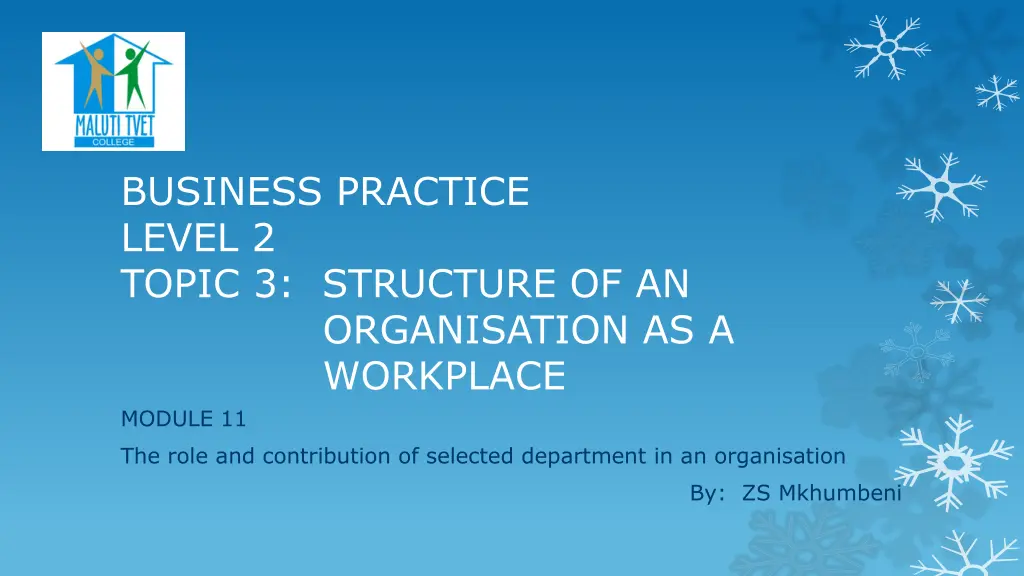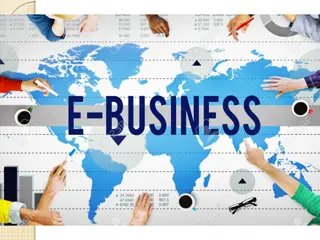
Understanding the Role of Administrative Departments in Organisations
Explore the functions, interactions, line of authority, and advantages/disadvantages of administrative departments within organisations. Learn how organisational structure impacts workplace dynamics and effectiveness.
Download Presentation

Please find below an Image/Link to download the presentation.
The content on the website is provided AS IS for your information and personal use only. It may not be sold, licensed, or shared on other websites without obtaining consent from the author. If you encounter any issues during the download, it is possible that the publisher has removed the file from their server.
You are allowed to download the files provided on this website for personal or commercial use, subject to the condition that they are used lawfully. All files are the property of their respective owners.
The content on the website is provided AS IS for your information and personal use only. It may not be sold, licensed, or shared on other websites without obtaining consent from the author.
E N D
Presentation Transcript
BUSINESS PRACTICE LEVEL 2 TOPIC 3: STRUCTURE OF AN ORGANISATION AS A WORKPLACE MODULE 11 The role and contribution of selected department in an organisation By: ZS Mkhumbeni
LESSON OBJECTIVES By the end of this module, you will Identify the of a department in an organisation Establish the organisation s links between departments Evaluate the contribution the department makes to the objectives of the organisation.
11.1 Functions of the administration department in relation to core business The administrative function is also responsible for other support tasks such as: Manning the reception area and switchboard Printing, copying, and filing documents Mailroom control Keeping statistics of activities keeping records used for bookkeeping.
11.2 Interaction between the administrative department and other departments Department in organisation: Steps in the purchasing cycle could be: Description of the need Suppliers choice and price Order placement and contract for supply Expedition Receipt, inspection and discrepancies Payment
11.3 The line of authority in the department Admin Director Reception Mailroom Copying Filing Switchboard Assistants Assistants Assistants Assistants
11.4 Advantages and disadvantages of the administrative department to the organisation Advantages Services are provided continuously everyday Service provided is standardised Records are kept centrally Jobs are processed as they are received. Disadvantages delays in getting jobs completed due to procedures and paperwork Can create a barrier between departments caused by priority conflicts Communication slow down
11.5 Structure of an organisation as a workplace Organisation in a business A business has to be organised so that each person knows exactly what is expected from them. This process of organising is based on two main principles: 1. Specialisation each person doing what they are best at 2. Departmentalisation people doing similar things working together Traditionally, most businesses have been organised and based on traditional pyramid model, that means the top of the pyramid having all the power whereas the base is much wider. In other words, the few shall dominate the many. This gives a narrow structure or high structure. The tall structure has many departments. This means many mangers with relatively few subordinates in each department. The flatter the structure represents opposite situation of fewer managers and departments, but more workers in each department. Each department would specialise in some main business activity, for example finance, administration, advertising, etc. Example of narrow structure and flat structure (page 171)
Organisation charts Organisation charts, a form of line diagram, are used to show work units or departments in relation to each other, titles of managers are given, as names of department-managers. Such chart indicate the arrangement of work, as well as illustrating the important concepts of: Responsibility Authority Delegation Span of control Chain of command
ENJOY!!!! ACTIVITIES Activity 11.1 Activity 11.2 Activity 11.4






















